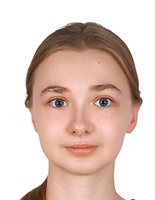Trends and forecasting of infant and perinatal mortality in the Republics of Tuva, Khakassia and Mongolia
DOI:
https://doi.org/10.25178/nit.2025.2.7Keywords:
Republic of Tuva; Republic of Khakassia; Mongolia; infant mortality; perinatal mortality; forecastingAbstract
The article presents the results of an analysis of the dynamics of infant and perinatal mortality, as well as the projected levels of these specific demographic indicators in two Russian republics — Tuva and Khakassia — and in the neighboring country of Mongolia. The study is based on official statistical data from these territories for the period 2019–2022. To assess the dynamics and intensity of changes, authors used a variety of indicators, including absolute growth (or decrease), growth rates, and rates of change, calculated using standard methods.
A comparative analysis of the trends in infant and perinatal mortality in the two republics of the Russian Federation and in Mongolia is presented. It was found that the average level of infant mortality is statistically significantly higher in Mongolia than in the Republic of Khakassia and the Republic of Tuva. The calculated indicators of absolute change and growth rate indicate a decrease in infant mortality in the Republic of Tuva from 2019 to 2022 and an increase in the Republic of Khakassia, while changes in Mongolia were negligible.
The level of perinatal mortality in the Republics of Tuva and Khakassia showed no significant differences, although in both republics there was a statistically significant increase in absolute growth and growth rate, with a more substantial increase observed in the Republic of Khakassia. In Mongolia, perinatal mortality was significantly higher.
In the coming years, an increase in perinatal mortality is projected for the Republics of Tuva and Khakassia, along with a rise in infant mortality in the Republic of Khakassia and a decrease in the Republic of Tuva. In Mongolia, these indicators are expected to remain largely unchanged.
References
Abylkalikov, S. I. and Baymurzina, G. R. (2022) Features of demographic processes in the cities of Kyzyl and Elista in 2011-2020: comparative analysis. New Research of Tuva, no. 2, pp. 34–52. (In Russ.) DOI: https://doi.org/10.25178/nit.2022.2.3
Aivazian, S. A. (2001) Applied statistics. Basics of econometrics. Moscow, Yuniti. 432 p. (In Russ.)
Albitsky, V. Yu. and Terletskaya, R. N. (2016) Infant mortality in the Russian Federation under the new requirements for birth registration. Problemy sotsial'noi gigieny, zdravookhraneniya i istorii meditsiny, vol. 24, no. 6, pp. 340–345. (In Russ.) DOI: https://doi.org/10.18821/0869-866-2016-24-6-340-345
Barantseva, N. A. (2021) The dynamics of the birth rate in the Republic of Khakassia in the 2010s in the context of demographic policy implementation. Problemy sotsial'no-ekonomicheskogo razvitiya Sibiri, no. 3, pp. 85–92. (In Russ.) DOI: https://doi.org/10.18324/2224-1833-2021-3-85-92
Belokrinitskaya, T. E., Sidorkina, A. G. and Mudrov, V. A. (2024) Possibilities for early diagnosis of fetal central nervous system lesions in the antenatal period (review). Nauchnye rezul’taty biomeditsinskikh issledovanii, vol. 10, no. 4, pp. 589–605. (In Russ.) DOI: https://doi.org/10.18413/2658-6533-2024-10-4-0-8
Gladkaya, V. S., Grinitsinskaya, V. L. and Medvedeva, N. N. (2017) Current trends in reproductive health and reproductive behavior of the female population in Russia. Mat’ i ditya v Kuzbasse, no. 1, pp. 10–15. (In Russ.)
Gladkaya, V. S. and Grinitsinskaya, V. L. (2023) The current trends in reproductive and demographic potential in the Republic of Khakassia. Vyatskii meditsinskii vestnik, no. 1, pp. 67–73. (In Russ.) DOI: https://doi.org/10.24412/2220-7880-2023-1-67-73
Grigor’ev, Yu. A. and Baran, O. I. (2017) Gender differences in mortality and life expectancy in the Siberian Federal District. Byulleten’ Natsional’nogo nauchno-issledovatel’skogo instituta obshchestvennogo zdorov’ya imeni N. A. Semashko, no. 1, pp. 42–47. (In Russ.)
Goitsinskaya, V. L. and Omzar, O. S. (2012) Congenital malformations in the structure of infant mortality in the Republic of Tuva. Zdravookhranenie Rossiiskoi Federatsii, no. 5, pp. 40–42. (In Russ.)
Goitsinskaya, V. L. (2013) Reserves for reducing infant mortality in the Republic of Tuva. Problemy sotsial’noi gigieny, zdravookhraneniya i istorii meditsiny, no. 1, pp. 26–28. (In Russ.)
Dongak, I. I. and Arakchaa, K. D. (2022) Experience of trend extrapolation in forecasting mortality from external causes in Tuva. Aziatskie issledovaniya, no. 3, pp. 92–99. (In Russ.) DOI: https://doi.org/10.24412/2782-6139-2022-3-92-99
Ivanov, D. O., Vetrov, V. V. and Kurdynko, L. V. (2022) History and prospects of the perinatal mortality indicator in Russia: literature review. Pediatr, vol. 13, no. 1, pp. 5–18. (In Russ.) DOI: https://doi.org/10.17816/PED1315-18
Nurova, A. A., Mirzoeva, R. K. and Berdysh, D. S. (2022) Current situation in perinatal and infant mortality in Russia. Vestnik biomeditsina i sotsiologiya, vol. 7, no. 2, pp. 59–66. (In Russ.) DOI: https://doi.org/10.26787/nydha-2618-8783-2022-7-2-59-66
Peleganchuk, V. A., Tribunskii, S. I., Kolyado, V. B. and Kolyado, E. V. (2018) Analysis of infant mortality in the Republic of Altai. Meditsina v Kuzbasse, vol. 17, no. 2, pp. 47–52. (In Russ.)
Rostovskaya, T. K., Zolotareva, O. A. and Davletshina, L. A. (2023) Fertility characteristics in the Republic of Tuva (1991–2021). New Research of Tuva, no. 2, pp. 34–49. (In Russ.) DOI: https://doi.org/10.25178/nit.2023.2.3
Selina, A. A. and Romanova, I. P. (2018) Infant mortality as an integral indicator of population well-being in the Republic of Khakassia. In: Proceedings of the 22nd International Scientific School-Conference for Students and Young Scientists “Ecology of Southern Siberia and Adjacent Territories”, ed. by V. V. Anyushin. Abakan, Katanov Khakass State University. 196 p. Pp. 139–140. (In Russ.)
Tinikova, E. E., Lushnikova, O. L. and Kanzychakova, N. G. (2018) Features of urbanization in the national republics of eastern Russia in the post-Soviet period: the case of the Republic of Khakassia. Evraziiskoe nauchnoe obozrenie, no. 8–2, pp. 82–85. (In Russ.)
Tretyakova, E. A. and Khasanova, R. R. (2017) Birth and mortality trends in the Siberian Federal District. Mir ekonomiki i upravleniya, vol. 17, no. 4, pp. 122–141. (In Russ.) DOI: https://doi.org/10.25205/2542-0429-2017-17-4-122-141
Tribunskii, S. I., Kolyado, B. V., Asanova, T. A. and Kolyado, E. V. (2011) Infant mortality in urban and rural areas of the Siberian Federal District. Sibirskii meditsinskii zhurnal, vol. 26, no. 3–1, pp. 168–172. (In Russ.)
Khol’shina, M. A. (2011) Modern features of the medico-demographic situation of the population of the Republic of Tuva. Vestnik Tambovskogo universiteta Seriya: Estestvennye i tekhnicheskie nauki, vol. 16, no. 6–1, pp. 1539–1542. (In Russ.)
Erdynieva, L. S. and Shozhat, O. M. (2023) Medico-demographic situation in the Republic of Tuva for the period 2015–2022. Vestnik eticheskoi meditsiny, no. 1–2, pp. 7–12. (In Russ.) DOI: https://doi.org/10.62501/2949-5180-2023-1-2-7-12
Yadamsuren, B., Merialdi, M., Davaadorj, I., Requejo, J. H., Betran, A. P., Ahmad, A., Nymadawa, P., Erkhembaatar, T., Barcelona, D., Ba-Thike, B., Hagan, R. J., Prado, R., Wagner, W., Khishgee, S., Sodnompil, T., Tsedmaa, B., Soyoltuya, B., Johnson, B.R., Fajans, P., Look, P. F. and Otgonbold, A. (2010) Tracking maternal mortality declines in Mongolia between 1992 and 2007: the importance of collaboration. Bulletin of the World Health Organization, vol. 88, no. 3, pp. 192–198. DOI: https://doi.org/10.2471/blt.08.061747
Published
How to Cite
For citation:
Agarkov N. M., Fabrikantov O. L., Yemelyanov S. G., Titov A. A., Alymova M. V. and Shorokhova A. A. Trends and forecasting of infant and perinatal mortality in the Republics of Tuva, Khakassia and Mongolia. New Research of Tuva, 2025, no. 2, pp. 129-143. (In Russ.). DOI: https://doi.org/10.25178/nit.2025.2.7
Issue
Section

This work is licensed under a Creative Commons Attribution-NonCommercial 4.0 International License.

Author(s) license holder(s) grant rights for their work to the journal (grantee of a license) under the simple non-exclusive open license in accordance with Art. 1286.1 «Open license for a research work, work of literature or fine arts», Civil Code of the Russian Federation.
New Research of Tuva publishes articles under the Creative Commons Attribution-NonCommercial license (CC BY-NC).
Since it is an open license, author(s) reserve the right to upload the article to their institutional repository, submit it to another journal (if it allows republications), or republish it on their own website (in full, or in part).
However, several conditions apply here:
a) The republished version must always contain the name(s) and affiliation(s) of the author(s), the original title and the hyperlink to the original version on the New Research of Tuva website;
b) It must be in open access, free of charge, and no category of readers must be in any way whatsoever advantaged over general readership.
c) should the contribution be submitted elsewhere by its author(s) without substantial modification (30% or more of original text unchanged), the body of the article should contain a disclaimer that the original version was published in New Research of Tuva (with a link to the respective page)
The CC-BY-NC is a non-revocable license which applies worldwide and lasts for the duration of the work’s copyright.














